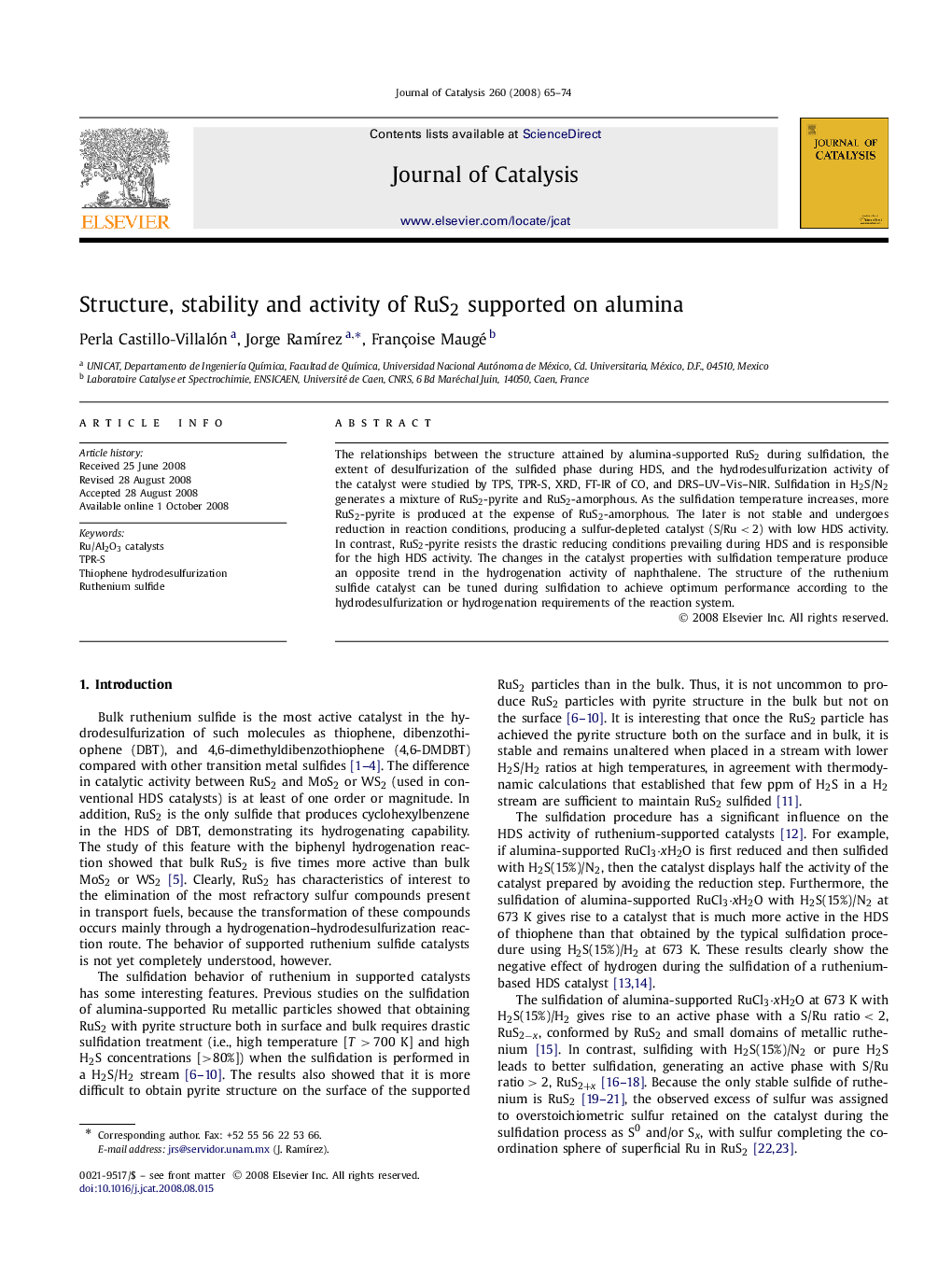| Article ID | Journal | Published Year | Pages | File Type |
|---|---|---|---|---|
| 62559 | Journal of Catalysis | 2008 | 10 Pages |
The relationships between the structure attained by alumina-supported RuS2 during sulfidation, the extent of desulfurization of the sulfided phase during HDS, and the hydrodesulfurization activity of the catalyst were studied by TPS, TPR-S, XRD, FT-IR of CO, and DRS–UV–Vis–NIR. Sulfidation in H2S/N2 generates a mixture of RuS2-pyrite and RuS2-amorphous. As the sulfidation temperature increases, more RuS2-pyrite is produced at the expense of RuS2-amorphous. The later is not stable and undergoes reduction in reaction conditions, producing a sulfur-depleted catalyst (S/Ru<2S/Ru<2) with low HDS activity. In contrast, RuS2-pyrite resists the drastic reducing conditions prevailing during HDS and is responsible for the high HDS activity. The changes in the catalyst properties with sulfidation temperature produce an opposite trend in the hydrogenation activity of naphthalene. The structure of the ruthenium sulfide catalyst can be tuned during sulfidation to achieve optimum performance according to the hydrodesulfurization or hydrogenation requirements of the reaction system.
